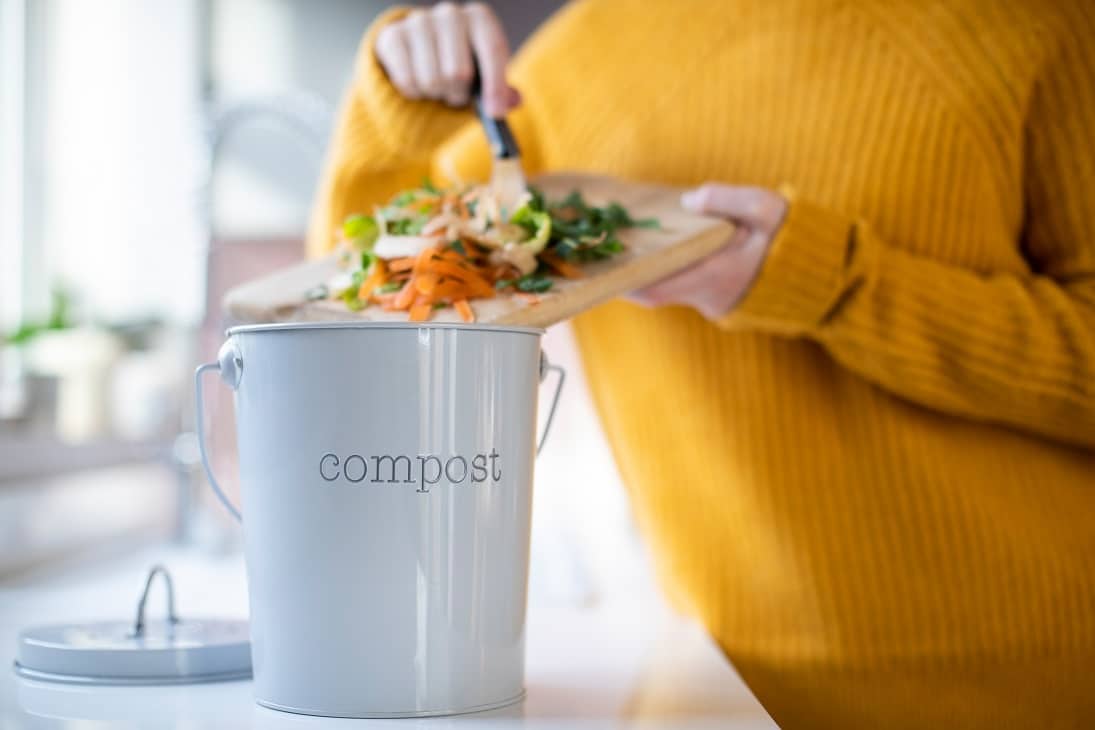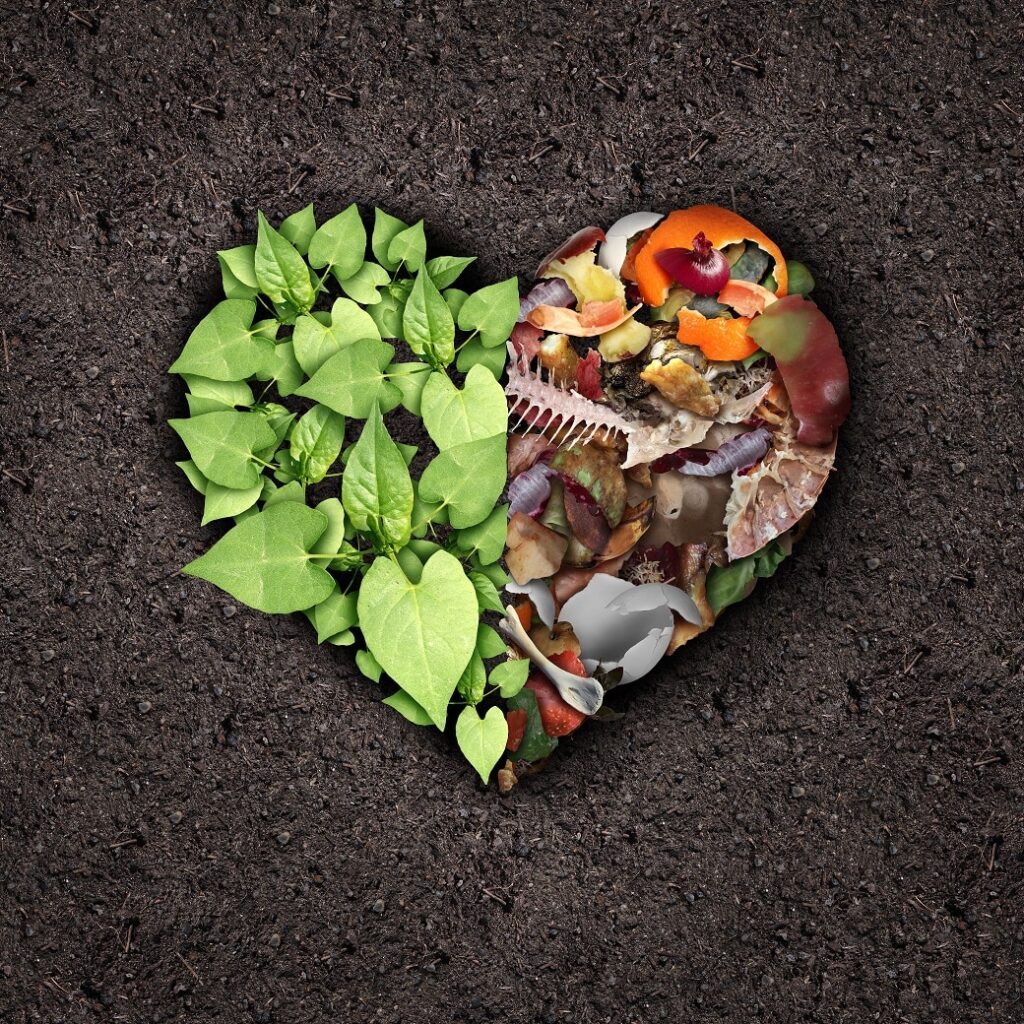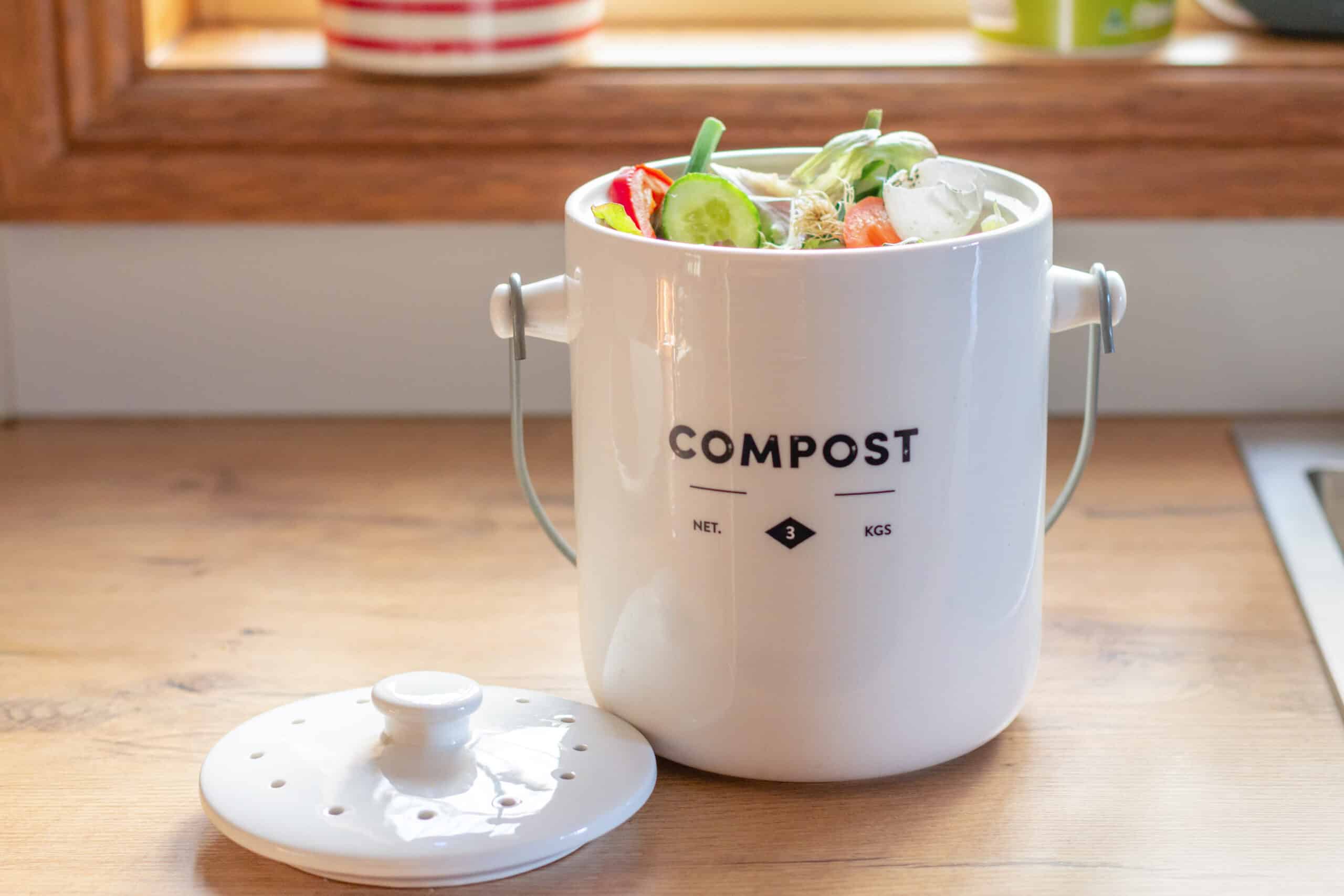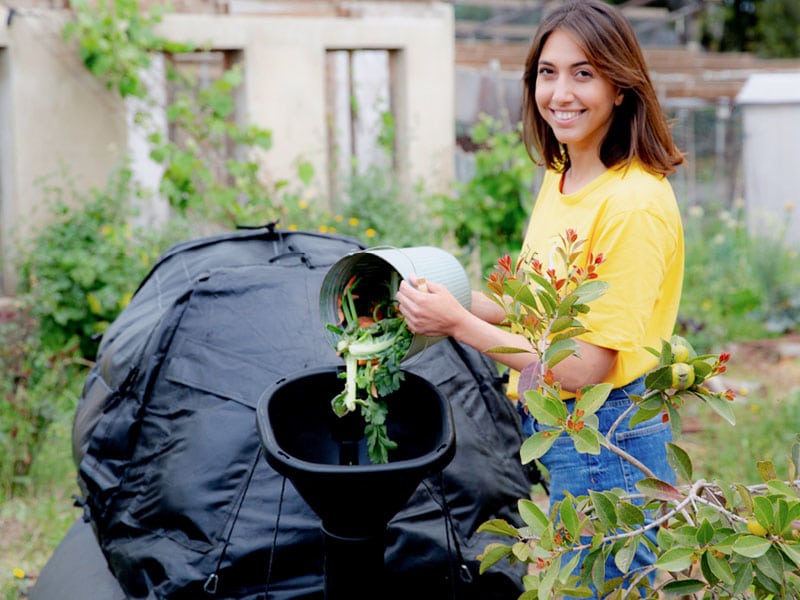
What does home compostable mean?
Home compostable is a term used for products made of materials that fully decompose through biological processes in conditions you can easily create at home. Another essential quality of these products is that their components don’t harm the soil once they’re released into the environment.
The term is mainly used to describe packaging made from natural materials that can be decomposed in home composters, meaning that all its elements are soil-friendly, including adhesives or printing ink. This gives a second life to packages that become fertilizer for gardens, enriching the soil and supporting plant growth.
Standards for home compostable products vary with the country or region, so it’s not always easy to recognize what packages can end in your home composter. For example, Australia issued AS 5810 – Biodegradable plastics suitable for home composting standard, while different countries in Europe have multiple certifications available, issued under the European standard EN13432. In the US, most home compostable products carry the labels OK Compost and Home Compost Certified, but a standard for home compostable doesn’t exist.
Confusion around terms that can influence home composting results. Home compostable products can be different from biodegradable and bio-based products, so not all biodegradable packaging is also home compostable. You want to make sure you double-check all the packaging and labels to avoid spreading plastic in landfills.
Benefits of home compostable life
When you have a composter at home to manage waste from organic products and home compostable packaging, you produce fertilizer for your lawn, garden, and vegetable garden. It helps you support plant growth through natural processes while also taking care of the soil, with multiple benefits for your crops, health, and the environment.
At the same time, by choosing to compost at home, you help minimize the usage of resources used for collecting and treating waste. Moreover, your actions will reduce the carbon-related impact of home waste disposal, with long-term benefits for the environment.

Home compostable vs. commercial compostable – what are the differences?
Home composting is composting done at a small scale, at home, with tools accessible to anyone. You set up (or buy) a home composter or composting pile and leave nature to take its course.
On the other hand, commercial composting refers to an industrial process that can decompose more types of organic matter than your home composter. These piles are monitored, so the process is controlled at all times to secure oxygen flow and specific environmental conditions that facilitate and accelerate decomposition.
Either way, the processes result in fertilizer used to boost plants and balance the soil, and they’re both safe for the environment and soil biodiversity.
The difference consists of the composter’s capacity and the temperature at which the decomposition takes place. A home composter provides naturally created moisture and a temperature between 68 and 86°F (20-30°C), while a commercial composting station can create an environment where the temperature is over 136°F (58°C).
That’s why you can’t fully decompose materials like compostable foodservice products in your home composter, but they’re still compostable in commercial setups. For the same reason, you need to pay attention to the compostable certification before adding products to your composting pile.
Most of the commercial compostable products certified with a BPI certificate aren’t suitable for home composters. Trying to compost them yourself will result in incomplete decomposition, which can negatively impact the quality of your fertilizer and the effects it can have on the soil.
How to live a home compostable life?
A home compostable life starts with being educated on what the process implies and what products qualify for the title of “home compostable.” Unfortunately, many countries still lack standards and official laws around what can and can’t be considered home compostable, so the first step is to find reliable information sources to learn about these products and what they’re made of.
As said before, compost certifications and standards are complicated and vary with the region you live in. You need to do your due diligence to understand whether a product is suitable for your composter.
The next step is to build a composting pile or buy a home composter to manage organic waste sustainably and start producing fertilizer. The trick is to provide the microorganisms breaking down the organic matter with good stuff to achieve nutrient balance and get nutritious fertilizer for your plant. Therefore, you must identify other materials to compost besides food waste and home compostable packaging.

What can you compost at home?
As a general guideline, your compost pile needs two major categories of products, “the greens and browns,” to provide balanced fertilizer that contains both carbon and nitrogen. Let’s see what materials enter each type and how they influence composting.
The “Greens”
The “green” ingredients are mostly “wet” and include food scraps, coffee grounds, or grass clippings. They provide nitrogen, which nurtures microorganisms working in your composter and ends up in the fertilizer to support plant growth.
However, not all food waste is considered home compostable, as not all leftovers can fully decompose in a home composter.
Food waste that can end in a composting pile:
- Fruit and vegetable peelings
- Cooked vegetables that have no oil or butter
- Flowers and fresh leaves
- Fresh grass and grass clippings
- Egg shelves
- Grains, such as rice or corn
- Teabags and coffee grounds
Food waste that shouldn’t end in a composting pile:
- Meat, bones, or animal products from slaughtering
- Milk, cheese, or dairy produce
- Fish
- Oils or butter
- Cooked food that has oil or butter
The “Browns”
The “brown” ingredients are dry and carbon-rich. In this category, you have dried leaves, egg cartons, newspapers, and other types of home compostable products, such as packaging, wipes, cutlery, or even waste bags—anything home compostable certified.
As you create layers in your composting pile, you want to add brown ingredients on the bottom and wet, green ingredients on top. This way, you ensure water and airflow properly through the pile to provide a moist environment where microorganisms can thrive.
The number of layers depends on how much space you have, but keep in mind that they shouldn’t be thicker than two inches (5-6 cm).
The brown:green ratio can also vary. Some people go for a 1:1 ratio, while others prefer 2:1, as more brown ingredients absorb the excess of water from the food scraps to prevent your composting pile from going bad.
What and where to buy home compostable products?
You can buy home compostable products online or in brick-and-mortar stores. However, you want to check the label to make sure it’s mentioned explicitly that they can be composted at home. Many of the compostable products available can only be fully broken down in commercial composters, which means they shouldn’t end in your composting pile.
Ideally, look for products made from:
- Wheat straw
- Paper
- Corn starch
- Potato starch
- PLA – polylactic acid (corn-based)
- Bagasse – fibrous material byproduct left after sugar-cane
- Wood
- Palm fiber
You will find things like cups, bowls, trays, bags, plates, serving gloves, baking sheet liners, and even aprons.
HomeBiogas composting solutions
The HomeBiogas bio-system is an environment-friendly way to manage food waste and home compostable products. It’s an alternative to traditional, time-consuming composting piles. Plus, it comes with an extra advantage: besides producing consistent amounts of fertilizer every day, you get to produce biogas that you can use for cooking.
HomeBiogas composting solutions use anaerobic digestion to break down organic matter—microorganisms are sealed in an oxygen-free space where they turn food scraps and other organic waste into methane and fertilizer. The methane resulting from microbial activity can be used for cooking with minimal impact on the environment.
With this innovative solution, you can produce fertilizer instantly and have consistent gas supplies. This is an improvement from traditional composting, a process that needs weeks or even months to provide organic fertilizer.
Last but not least, the HomeBiogas composting solution can manage almost all types of kitchen waste, including meats, dairy, oils, and even animal manure. That’s because the system includes a series of filters and a sealed digester where all the chemical reactions occur. This way, odors are eliminated, and the food waste doesn’t attract pests.
Note that the same rules on home compostable products apply to this solution. You still need to check the materials products are made of and ensure that everything you introduce in the biodigester is organic and comes from natural ingredients.

Summary
Finding home compostable products might not always be easy, and extra care is necessary to identify the suitable materials that can end in your composting pile and enrich your fertilizer. Being educated about what makes a product home compostable and how you can manage waste sustainably and efficiently is the first step towards a home compostable life.
The results are worth the extra effort, as you reduce your carbon footprint and live a self-sufficient life while also saving on your gas bills and boosting your plants and crops.






